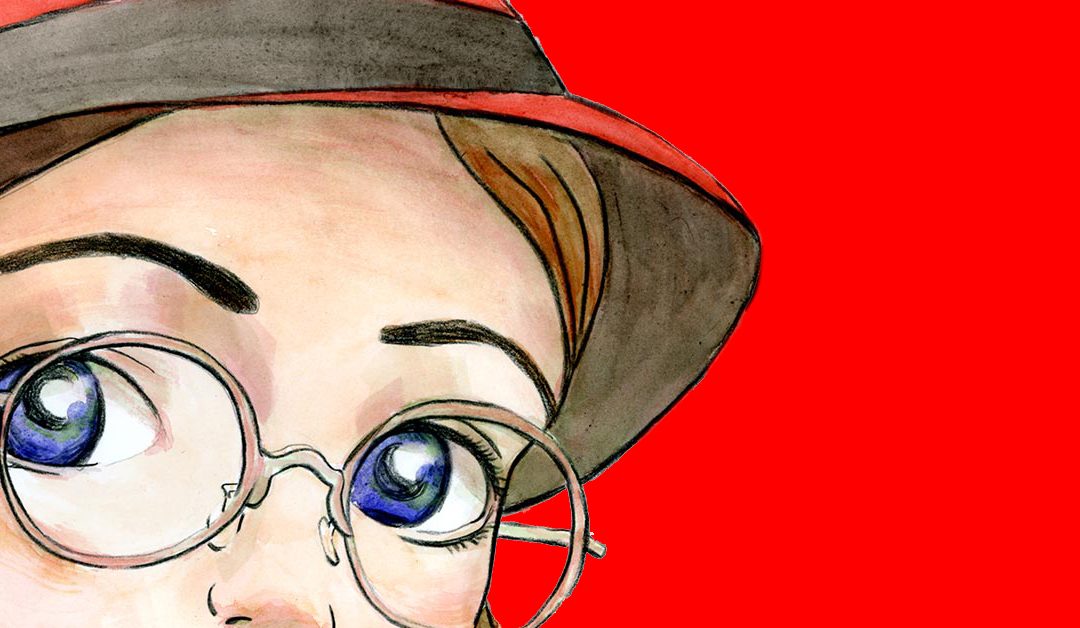
by Ben Zackheim | Jan 15, 2014 | Writing |
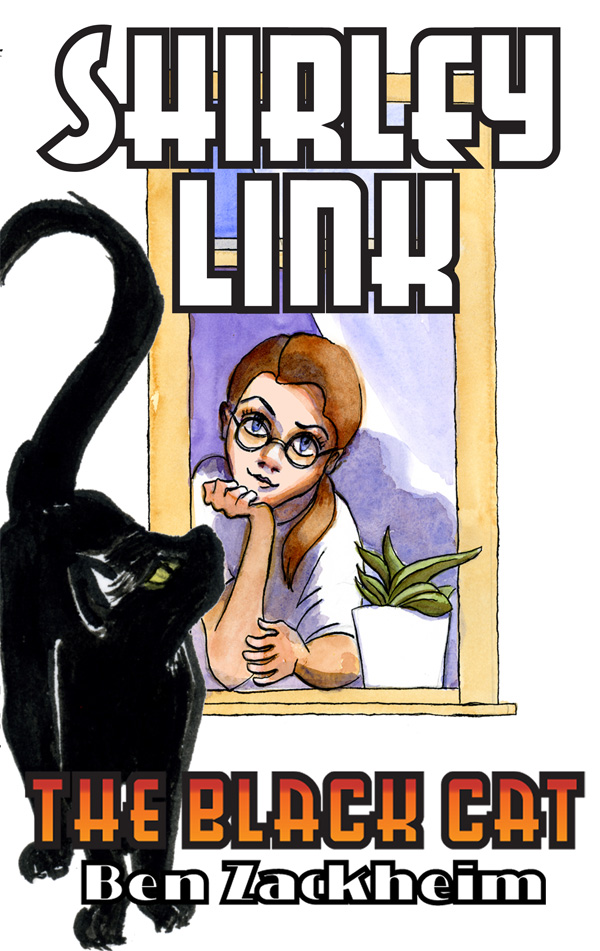
Creating a book cover is a bit like mixing potions. There are definitely tried-and-true characteristics of a good cover, but there are also a thousand different types of covers that look great.
And, of course, a million ways to create a book cover that looks awful.
How does Robin Hoffman manage to make such great covers for the Shirley link series? It starts with her love of the character, which has been clear since she read the first draft of the first book in the middle school reading series, Shirley Link & The Safe Case. But, really, it all comes from her working her butt off!
Here’s a peek into the process she goes through every single time a new Shirley cover is needed. Creating a book cover ain’t easy. But it sure is fun to watch happen. Step-by-step.
Click on the images to see ’em get blown up!
-

-
You can see Robin playing around with the relationship between Shirley and the black cat here. I love the way you can immediately see their connection just in their poses.
-

-
The playfulness continues! Robin is trying to find a way to show a bunch of information on a cover, including humor, relationship and easy-to-read symmetry
-

-
Here you can see her working with the question mark motif. As usual, she’s found the right symbol to focus on for the cover. No one gets Shirley like Robin!
-

-
Still working on angles and that magic moment where cat and detective bond.
-

-
Color! Just to shake things up…
-

-
Notice how the strongest sketch is the one that ended up being closest to the final cover. Amazing how a good artist can just tell when she’s hit it on the head (whether she knows it, or not)
-

-
Again, the question mark motif where the tail reflects the story’s mystery along with the personality of the cat! Love this.
-

-
Playing with symmetry again. Robin will do anything to capture the right framing for a moment.
-

-
The final cover is coming together, but not before Robin tries out some more angles.
-

-
A little more detail. While I love this one, there’s not enough connection between Shirley and the cat.
-

-
Ooooo, very close to the final.
-

-
I love this one but the cat would have been tough to read on small screens.
-

-
Cat on one side…
-
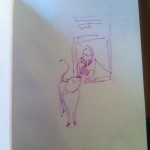
-
Cat on the other side!
-

-
Working out placement now that the angle is clear.
-

-
Pre-final sketch.
-

-
Character study with Bad Kitty!
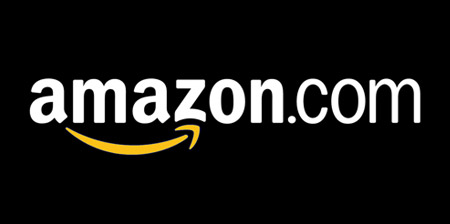
by Ben Zackheim | Jan 11, 2014 | Book Promotion, Writing |
Amazon recommended books are getting an upgrade (or a downgrade, depending on your point of view). I was browsing my books’ pages this morning when I saw a little pop up window appear on Shirley Link & The Safe Case‘s product page.
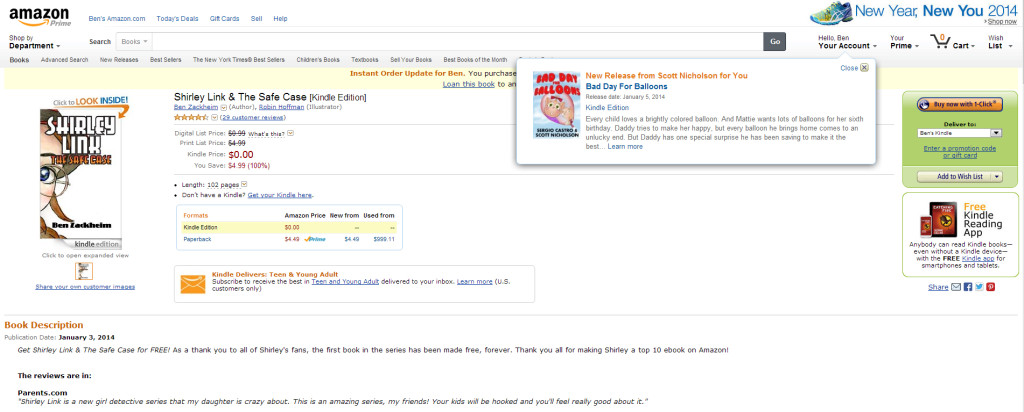
See that window dropping down from the upper right portion of the screen? It’s certainly in your face. At first I thought it might be a recommendation based on an author I follow on Amazon. But I don’t subscribe to his updates.
(Quick aside: Yes, you can follow authors and receive updates about their latest releases. Just visit their author page and look for the “Stay up to date” section on the right side of the page.)
I wonder if it’s a new feature to show Amazon recommended books to readers, or just a trial balloon. Amazon is known for trying new stuff all the time. I hope it’s widespread. And, uh, I hope I can find a way to take advantage of it with my books.
Have you seen this Amazon recommended books feature before?
If yes, how long ago? Do you like it, or is it too aggressive? Let us know in the comments.

by Ben Zackheim | Jan 10, 2014 | Book Promotion, Writing |
If someone tells you, “I have a bridge to sell ya!”, would you believe them? Of course not!
But what if the mayor of New York City was the one talking? That makes it a tougher question. It’s conceivable that he could sell it to you. He’s the mayor! But wouldn’t he have to massage the bureaucratic engine of the city to make the sale happen? Isn’t he just one powerful person in a city of powerful people?
That’s the conundrum we find ourselves in with Amazon. They actually do have a bridge (to success) to sell us, and they could indeed sell it to us.
But will they do any of the hard work required to make the sale?
Does Amazon KDP work hard enough to justify your exclusivity?
As I mentioned in the last post in this series on KDP, there are over 20 million Amazon Prime members who can check out your book for free. Amazon has a big stake in showing those millions of people all of the amazing benefits they get for their $89 membership fee. One of those benefits is your KDP Select book! But to finish my point about the promotional possibilities, there’s just no way to tell when/where/whether your book will get a spotlight of any kind. Amazon has many ways to highlight books. Recommendations, newsletters, lists, you name it. But Amazon is also a long tail company, meaning they’ll only give real love to the top 20% of products in any category, leaving the 80% who don’t hit their proprietary criteria to fend for themselves.
It’s one thing to say you have the bridge, it’s quite another to say, I’ll walk you through the sale. Just like the mayor of New York doesn’t really know how to make the sale happen, Amazon can’t promise that KDP Select will be a bridge to success. But they want you to think it can.
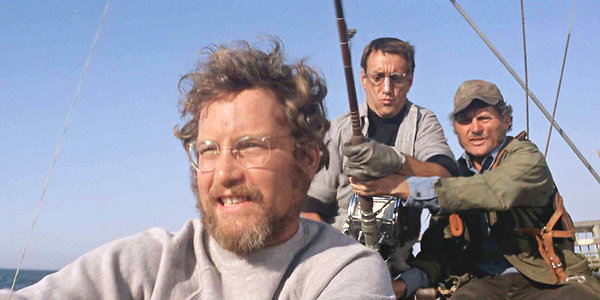
Remember that scene in Jaws, when the captain gets a peek at the shark for the first time?
“We’re gonna need a bigger boat,” he says, while watching the death of him swim away.
The way I see the bookselling world is as follows:
“We’re going to need a shorter list…”
If you think about it, we’re all on a bunch of lists.
Our names and our books are in the databases of businesses across the bookselling spectrum, from Amazon to Smashwords to Ingram. If you’re #457,098 on a popularity list, or a best-selling list, or a “best of” list then your visibility is — well, it is what it is.
Now, if your name and/or book is #412 then you’re much more visible! You’re more likely to show up in a newsletter, or to get reviewed, or to show up in a recommendation widget on some site somewhere, somehow.
In the same vein, to survive in the publishing world you need to be on a shorter list. I say do press releases, because it puts you on a shorter list. I say post your book to every site that allows it, because you’ll be on a shorter list. I say share as much free content as you’re comfortable sharing because you’ll be on a shorter list. My point is, if you’re not high on many lists then you need to be on a bunch of short lists.
So let’s say the unsayable here: The enticing promise of KDP Select is that Amazon will help your books get visible within their ecosystem. Anyone who says that Amazon doesn’t promise this is splitting hairs. Of course they don’t promise exposure. In the same way that Amazon splashes their $11 million+ Global Fund figure on KDP’s homepage in hopes of triggering your “lottery brain”, they want to plant the seed of hope that they’ll do some heavy lifting for you once you sign up — in the dark, behind the scenes, via newsletters or recommendations or pixie dust they will work their magic for you.
Guess what. They won’t strain anything.
Here’s what they will do to get your book seen:
1) They’ll allow 20 million+ Prime members to borrow your book (this is often worth as much or more cash than an actual sale)
2) They’ll give you five promotional days to give away your book for free. If done right (i.e. if you do a lot of work and spend money advertising) then you have a VERY good chance of showing up on Amazon’s semi-visible Top Free Books list. This is a tab that sits behind the best seller list on the genre pages. It’s getting harder to find as time goes on.
3) They’ll let you put your book on sale for a fixed amount of time using Countdown Deals. It’s a new feature, but there are some stories of success beginning to circulate. Amazon is big on good ol’ high-pressure sales tactics (see above for “I have a bridge to sell ya” and “Buy a raffle ticket and win big money!”) It looks like the tried-and-true method of limited-time sales also performs well.

Yes, sign up for KDP Select right away. Before it’s too late.
Here’s the thing that took me 2 years of playing the KDP Select game to learn. When Amazon takes a risk with you, you tend to come out on top. But like any business, when the risk stops paying off they’ll pull back in an instant. What that means for us is that Amazon likes releasing new services and features that are high-risk and beneficial to authors.
And then they’ll neuter it. Overnight.
An example?
KDP! What a huge shot in the dark it was for Amazon to open their market to small and self-publishers. Those who signed up early with quality work are the stars of our time. KDP best sellers and big movers got exposure, sitting right next to their big label counterparts, stealing eyes and hearts. While KDP authors are still given equal weight on the best seller lists, they’re relegated to a sorta-visible tab on genre pages. Yes, it qualifies as one of those “shorter lists”, but it’s more like a shorter, hidden list. The indisputable fact is that Amazon has pulled back their efforts to make KDP books visible on their site.
Need another example of Amazon taking risks and sharing the rewards, until they get tired of the risk?
The free promo days. Those free days were a huge risk that Amazon took with thousands of authors, and thousands of authors shared the rewards. But once Amazon grew the hell out of their library and snagged exclusivity on boat loads of books they dialed back their support of the promotional days. They did this by penalizing web sites who promoted the free books to readers. There are a lot of reasons why they did this, some of them ultimately good for our industry. But I’m not making a value judgment here. I’m just stating the fact that when Amazon tries something new (and we go along for the ride) then we tend to come out smelling rosey.
And that’s why I’m willing to say that, as of now, it’s worth signing up for KDP Select.
The Countdown Deals product is new. Amazon is taking a risk in launching it. With KDP they gave us a new market, with free promo days they gave us an effective way to be seen, and with Countdown Deals they’re giving us a dynamic way to sell.
From the Amazon description of Countdown Deals:
1) They’re time-based: Not only does this give you more control to decide how long the book is discounted, but the time remaining for the promotion is visible to customers to increase excitement for the price discount.
2) Customers see the regular price: It’s easy for customers to see the great deal they’re getting, as the regular price is included on the book’s detail page, right beside the promotional price.
3) Royalty rate is retained at lower prices: You will earn royalties based on your regular royalty rate and the promotional price. As a result, if you are using the 70% royalty option, you’ll earn 70% even if the price is below $2.99.
4) There’s a dedicated website: Customers can easily browse active; Kindle Countdown Deals at www.amazon.com/kindlecountdowndeals, providing yet another way for books to be discovered.
5) You can monitor performance in real-time: A new KDP report displays sales and royalties at each price discount side-by-side with pre-promotion performance, so it’s easy to compare.
Pay attention to #4. A dedicated Amazon site is a tremendous asset for authors. It means that the same avid readers that made free promos such a huge hit now have a place to browse great deals.
In the final analysis, the biggest benefit of joining KDP Select is the experience itself. You learn a lot. You experience how Amazon thinks. You sense its reach like never before. You spot opportunities in small corners of their world. For instance, by signing up for KDP Select I learned a whole bunch about how to leverage free promotional days to help sales. I use that knowledge with my non-KDP Select books, as well.
So give KDP Select a try with one of your books. If you don’t like it, opt out so you don’t auto-renew after 90 days.
What do you think? Do you think Countdown Deals are a seismic shift in the Amazon bookselling ecosystem? Or is it a bust-in-the-making for authors? Let us know in the comments!
In my next post, I’m going to break down, step-by-step, how I set up my free promotional days. This routine consistently gets me to the top 5 in both Young Teen Mysteries and Women Sleuths genres on Amazon.
by Ben Zackheim
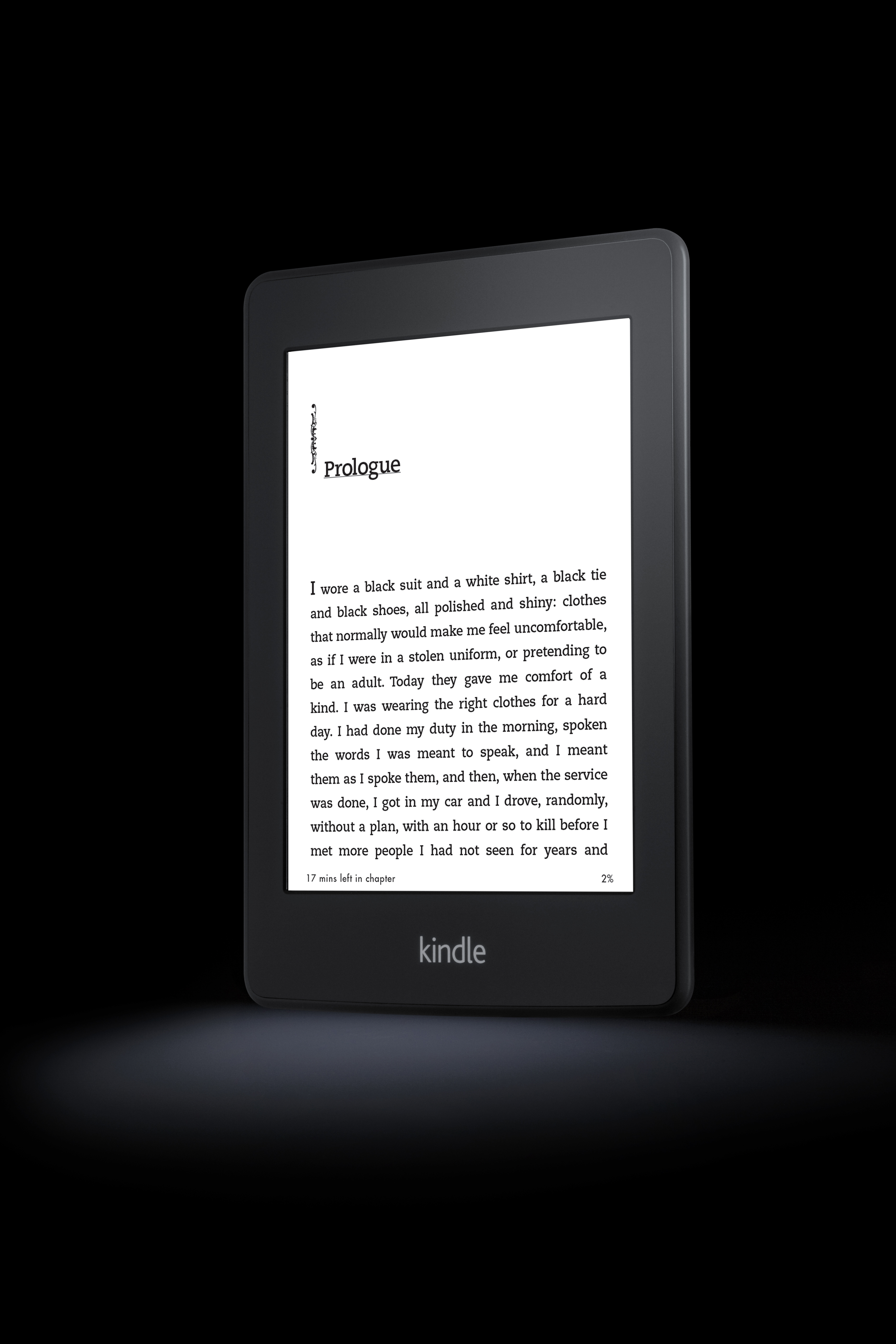
by Ben Zackheim | Jan 3, 2014 | Book Promotion, Writing |
Yes, Kindle Direct Publishing Select is good and bad for writers
I’ve wanted to write this post for a long time. I’ve used KDP Select for every one of my Shirley Link books at one time or another, and I’ve had some epiphanies about the KDP Select Global Fund that I’d like to share. Some of my insights come from watching Amazon grow since its early days. I think I’ve identified some consistent behavior that works for us little guys, and some bad habits that do not work for us in the least.
The benefits of KDP can be summed up quick and easy (just like Amazon likes it!):
-
Get your share of the $11 million KDP pie (known as the KDP Select Global Fund)
-
Free promotional days
-
Countdown deals
-
70% on all sales to Japan, Brazil, India and Mexico.
-
“Promotional possibilities”
I’ll cover the KDP Select Global Fund today. The rest of the touted benefits will be covered in their own posts.
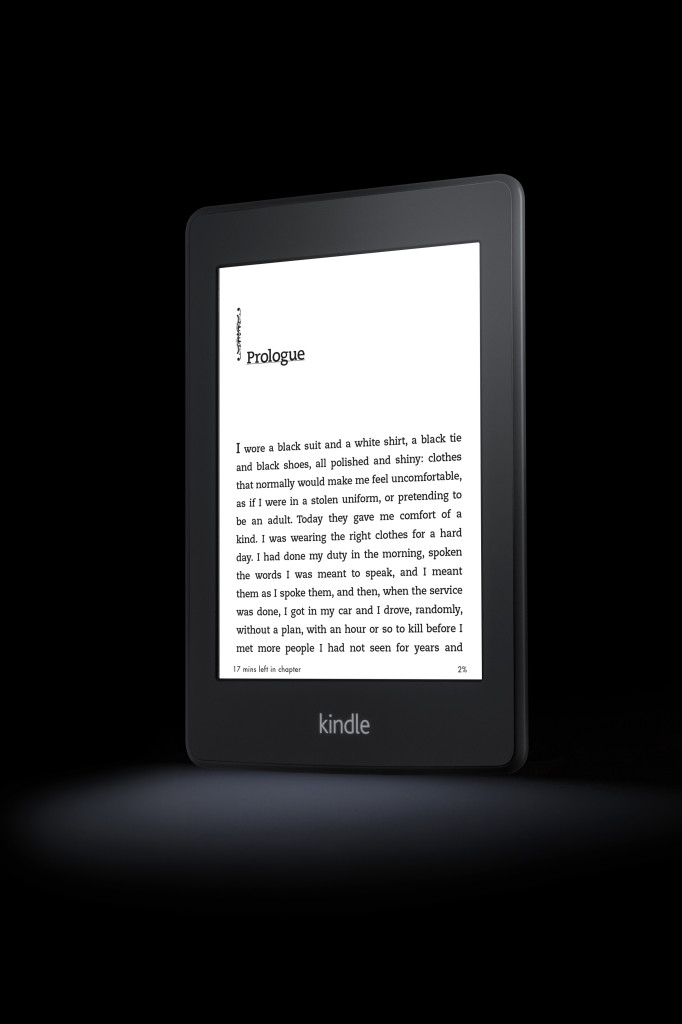
The Amazon Treasure Chest: Do not pass go, do not collect $200
If you’re an indy writer, there’s a number you see floating around the mondo web. It’s a distracting number. It’s the kind of number that forces you to pay attention. Amazon loves to tout it. Lucky authors swear by it. And the rest of us are mostly confused by it.
$11 million.
The $11 million is cash from the KDP Select Global Fund that Amazon doles out to authors who opt-in to KDP by offering their book(s) exclusively on Amazon. If an author signs up for KDP Select and her books are borrowed by Prime members then she gets a cut of the monthly-updated fund.
Here’s how it works in a nutshell:
Sally is an Amazon Prime member. That means she pays $89 a year to get free shipping and other benefits from Amazon. She browses for books on Amazon and stumbles on one for sale at $2.99. But what’s this? Just above that price is a message informing her that she can read the book for free because she’s a Prime member.

All she has to do is borrow the Kindle book for as long as she wants and then check it back in from her device when she’s done. She decides to borrow the book.
The author gets up the next morning and checks her sales. In the Units Borrowed column of her online report (or the “Units Sold or Borrowed” column on her downloaded spreadsheet) she sees that someone borrowed her book last night. How much will she get paid for this borrowed book? Amazon determines the amount based on the size of the till (usually around $11 million) and the number of books borrowed in that month. Whatever percentage of the overall borrows that a book delivers is the percentage of the till that the author will receive.
I’ve seen first-hand that the amount paid for the borrow often matches or exceeds a straight sale.
So that means KDP is worth it!
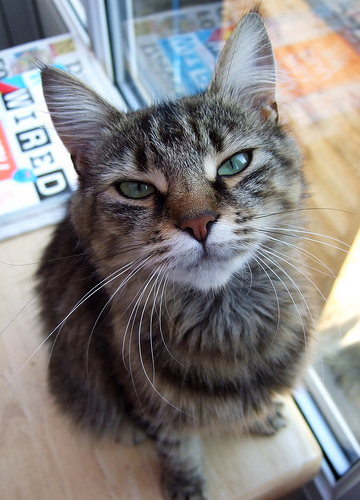
Well, maybe.

There’s an old saying that comes to mind. “If you want to win the lottery, you have to buy a ticket.” One of the reasons that Amazon touts their monthly number is to activate that same trigger in your brain that sweepstakes do. Yes, you could win the lottery and KDP could do bonzo business for you. But unlike a lottery, you can do very well on Amazon, and in self publishing without it. You can find a following and make a good living. So you don’t have to buy a ticket to win on Amazon. But you do need to join KDP if you want a slice of the prize. A slice of the prize that could get you more visibility on Amazon, and consequently more sales.
The KDP treasure chest varies by month. It’s been over 10 million more than under a million in 2015. But what does that mean? Do you really have a chance to get a piece of that large pie?
Here’s the playing field you’re performing in. There are over 20 million Amazon Prime members who can check out your KDP Select book for free. Amazon has a big stake in showing those millions of people all of the amazing benefits they get for their $89 membership fee. One of those amazing benefits is your book!
But does Amazon do enough? Or, like the $11 million hard-sell, is it an ethereal opportunity, floating around for a few dozen people to leverage?
We’ll cover that in my next post about “Promotional possibilities.” Why do I have that term in quotes? Because it belongs there. It really, really belongs there.
by Ben Zackheim
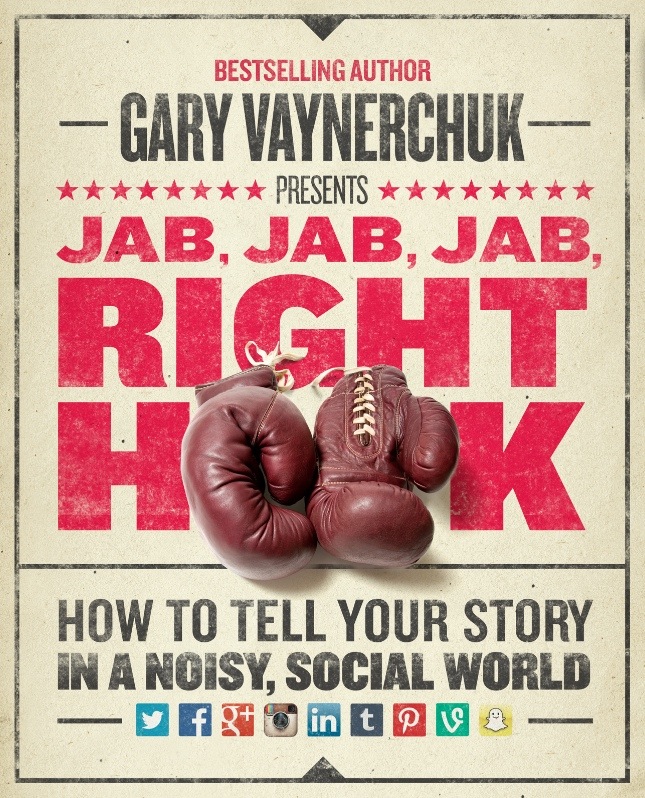
by Ben Zackheim | Dec 22, 2013 | Book Promotion, Writing |

I like to poke fun at social marketing, but I do respect those who can do it well.
I’ve been reading Jab, Jab, Jab, Right Hook by Gary Vaynerchuk. The premise of the book is that social marketing is like boxing, where you loosen up your target with jabs, then deliver a strong hook to close the proverbial deal. While he makes a lot of great points, my favorite advice covers the three characteristics of a great “right hook” social network post.
From his book:
1) They make the call to action simple, and easy to understand.
2) They are perfectly crafted for mobile, as well as all digital devices.
3) They respect the nuances of the social network for which you are making the content.
You’ll have to buy the book to dig into the meat of it, but he is onto something. I’ve found that a simple message always works best, especially if you know exactly who you’re trying to reach. It’s not new advice, but it’s tightly packaged in a list that I can put on a sticky note. Vaynerchuk also gives us his take on what exactly the nuances of each social network are, so the particulars of #3 are covered. Actually, the examples of good and bad social posts is the best part of the book. We get to see some hilarious near-misses, dead-on copy with complete photo failures, and so on.
You’ll close the cover with a new sense of what’s possible, which is what the author is going for. His frustration with how business is done is palpable throughout the tome. I get his irritation, having worked at Sony, Viacom and Aol over the years, it was rare that something nimble and new was crafted. Hopefully JJJRH will sit on the desks of managers throughout the mondoweb.
I recommend the book to anyone who’s ready to take social marketing seriously. One caveat (where I risk sounding stuck-up, but I’d rather sound stuck up than recommend a book that’s not a good fit!): The book is written clearly, but it does assume readers have struggled with the ins-and-outs and ups-and-downs of social marketing. If you’re new to this world then you’ll probably end up reading sentences a couple of times to get the gist. But when you do get it, you’ll be ahead of the game.






























